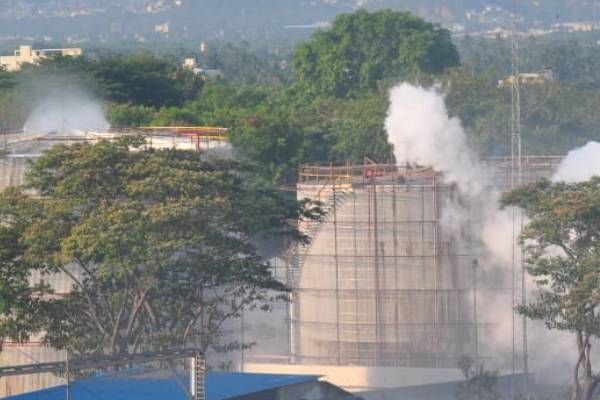The National Green Tribunal on Friday directed LG Polymers to deposit Rs 50 crore with the Vishakhapatnam administration for inflicting damage to life, public health and environment.
On Thursday, a leak of chemical vapour from the LG Polymers plant on the outskirts of the coastal city killed 12 people while over 350 people who inhaled the toxic gas are undergoing treatment at the hospital.
The next date of hearing is May 18.
The NGT took suo moto cognizance of the matter and stated, “Having regard to the prima facie material regarding the extent of damage to life, public health and environment, we direct LG Polymers India Pvt Ltd to forthwith deposit an initial amount of Rs 50 crore with the District Magistrate, Visakhapatnam.”
A bench headed by NGT Chairperson Adarsh Kumar Goel also formed a five-member committee to visit and inspect the site and submit its report before the next date of hearing.
The team has been asked to specifically report on the sequence of events, causes of failure and authorities responsible, extent of damage to life, human and non-human, public health and environment.
They have also been directed to submit the steps to be taken for compensation of the victims and restitution of the damaged property and environment, and remedial measures to prevent recurrence.
The committee comprises Justice B. Seshasayana Reddy, former Judge of Andhra Pradesh High Court, V. Rama Chandra Murthy, former Vice Chancellor of Andhra University, and Pulipati King, Head of Chemical Engineering Department of Andhra University.
It also involves Member Secretary of CPCB, Director of CSIR-Indian Institute of Chemical Technology and Head of National Environmental Engineering Research Institute.
The Member Secretary of Central Pollution Control Board will act as the nodal agency for their coordination.
The NGT bench, also comprising Judge Sheo Kumar Singh and Nagin Nanda, has sought response from the AP State Pollution Control Board, District Magistrate, Central Pollution Control Board, Ministry of Environment, Forests and Climate Change and LG Polymers India on the incident.
The tribunal stated that the Styrene gas released from the plant is a hazardous chemical as defined under Rule 2(e) read with Entry 583 of Schedule I to the Manufacture, Storage and Import of Hazardous Chemical Rules, 1989.
“The Rules require on-site and off-site emergency plans to ensure prevention of damage. Leakage of hazardous gas at such a scale adversely affecting public health and environment, clearly attracts the principle of ‘strict liability against the enterprise engaged in hazardous or inherently dangerous industry’,” it added.

































